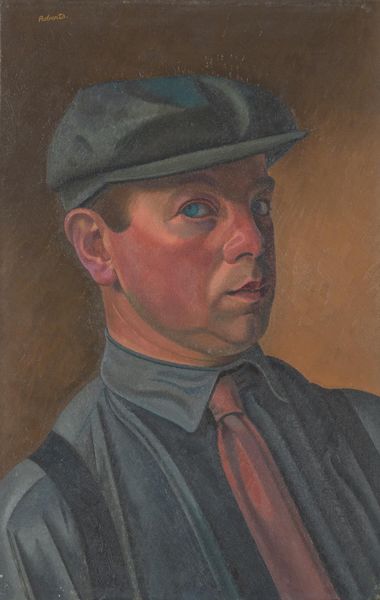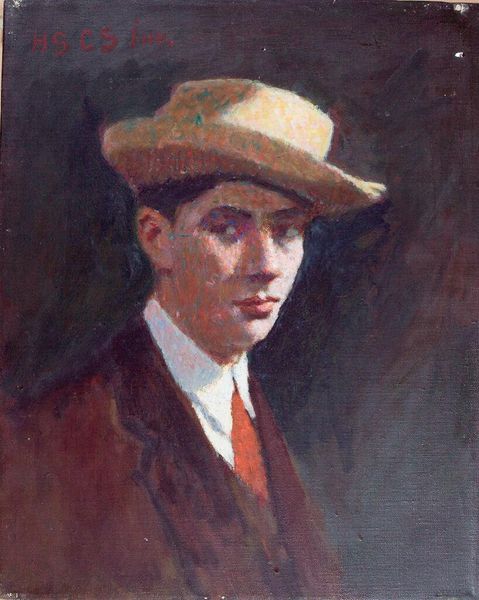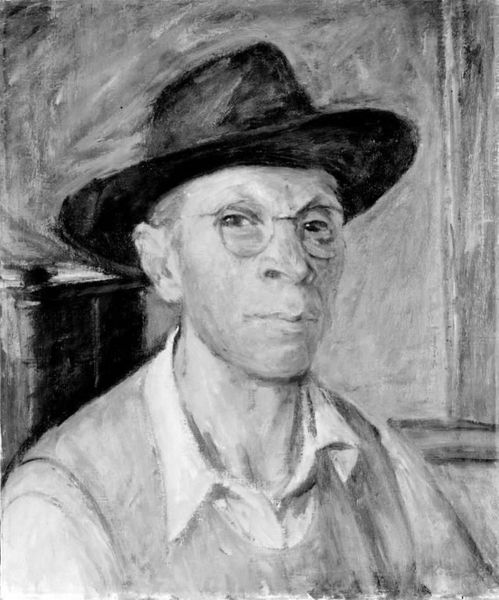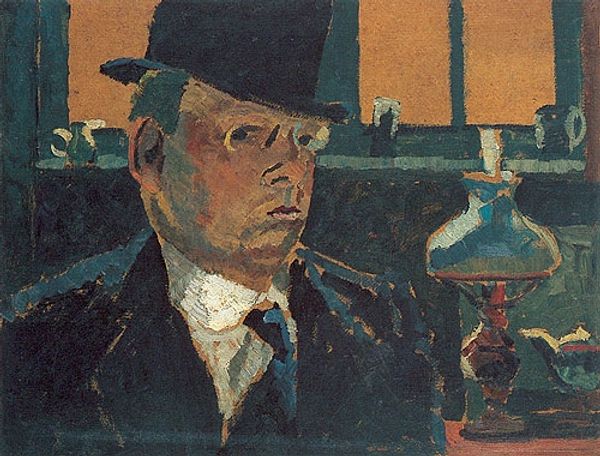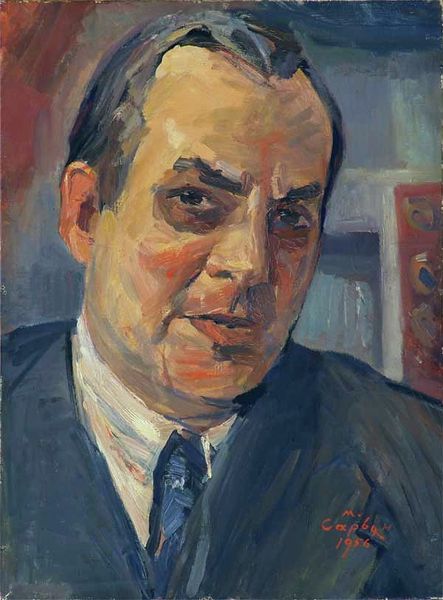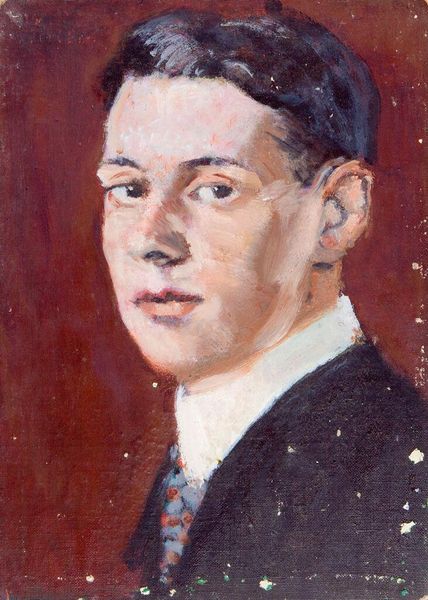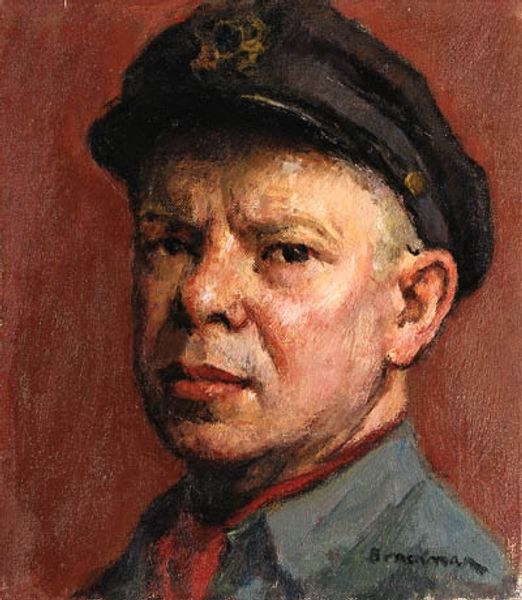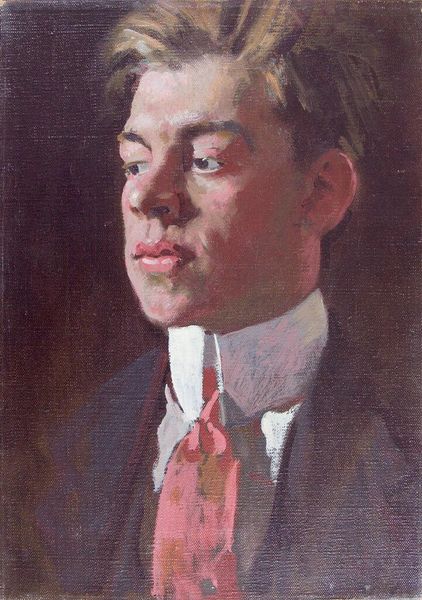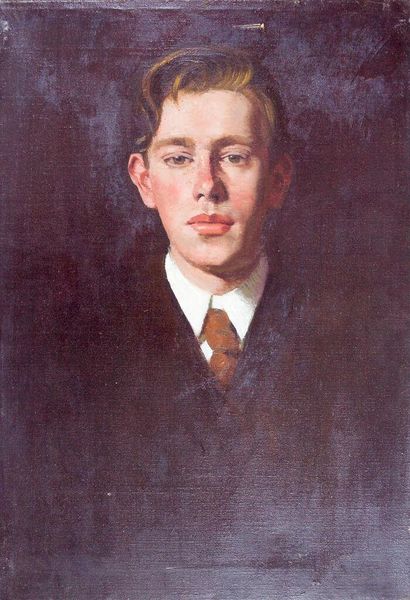
painting, oil-paint
#
portrait
#
self-portrait
#
painting
#
oil-paint
#
ashcan-school
#
modernism
#
realism
Copyright: Edward Hopper,Fair Use
Editor: So, this is Edward Hopper’s "Self-Portrait" from 1930, made with oil paint. There's a kind of…plainness to it, a directness in his gaze. How do you interpret this work, particularly in light of his other paintings? Curator: This "plainness," as you call it, is precisely what makes it so compelling. Think about the hat. Hats in portraits, especially self-portraits, are often statements. This one… it's just a hat. A common, everyday object. How does that downplaying of symbolic gesture resonate with you? Editor: It makes him seem approachable, relatable almost, even though his other works often depict a sense of isolation. Curator: Exactly. But does the hat also function as a kind of mask? Hopper is known for portraying alienation, a detachment, within the modern American landscape. Is he hiding behind this ordinariness, subtly suggesting a hidden interior world? What memories and cultural connotations are evoked for you by such a hat? Editor: I guess it suggests a typical 1930s man… trying to fit in maybe? He doesn't seem like he wants to draw attention. The light falling on the right side of his face contrasts the shadowed left, like a window onto a world of light and another of doubt and shadow. Is he consciously playing with archetypes, using visual cues to build a character, or reveal one? Curator: He’s doing both, and in his careful construction of the image, Hopper's allowing you to see some universal traits and emotions in what could otherwise just be seen as *a man wearing a hat*. The symbolism of light and shadow is powerful here. But look also to the window frame behind him: how does the structure behind him inform the narrative of his interior state? Editor: Wow, I didn't think of that at first, but now it brings another perspective to his inner and outer landscapes, that's why I wanted to learn more. Thank you! Curator: You're very welcome. Now, you are better equipped to recognize the artist's interior states through his mastery of imagery.
Comments
No comments
Be the first to comment and join the conversation on the ultimate creative platform.

